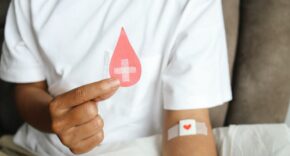Last winter it was reported that bed occupancy was dangerously high at about 99% of capacity, raising calls for additional funding and support to address the knock-on effects of ‘bed-blocking’ on patient care, yet not much has changed which raises concerns as we drawer closer to winter. While it is easy to point at patient experience and outcomes, there is a silent epidemic of waste created by poor management of the bed estate that is reducing nursing staff’s time to care and is a significant contributor to poor staff morale and absence due to workplace stress.
How can a modern health service justify the continued reliance on teams of nurses roaming wards in the hunt for an empty bed? Why are highly skilled and motivated staff comparing paper based notes three, even six times a day in a desperate bid to match patient needs to bed availability? Why are these staff, whose primary role is patient care, expected to find the time to clean beds? And how are they expected to provide exemplary care to patients when the patients themselves are on the wrong ward?
Today the NHS is reliant on an out-dated bed management model that can readily be transformed by using real-time measurements. The results are not only improved patient care and the realisation of significant financial benefits; they include a revitalised and energised nursing staff fulfilling the role they entered the profession to fill.
Overstretched resources
Every year the NHS opens 3,500-4,000 escalation beds over winter to accommodate additional demand. Every year, NHS Trusts spend between £2 million and £7 million adding capacity. Yet, this is in a scenario where the average bed in the NHS is left ‘idle’ between a patient being discharged and a new patient being admitted for six to eight hours, when proven best practice shows that it should be significantly less and as little as one hour and 45 minutes.
The problem lies in the fact that most current bed management teams have no idea how many beds they have available, let alone where those beds are located. They have no idea when a patient is discharged and a bed becomes immediately available for cleaning; instead nursing staff are only expected to declare a bed available once they have found time – in amongst their primary duties of care – to clean it.
Staff are reliant on roaming the wards in a bid to find a bed – which is then allocated not on the basis of suitability, or appropriateness of care, but on time: the patient closest to breaching the access target or the patient waiting the longest receives the bed. The result is a large number of outliers, patients located in the wrong ward for their clinical needs – a problem that affects both staff morale and long term patient outcomes.
Moreover, information is only shared through frantic phone calls and at numerous bed meetings, often attended by twenty to thirty people. This is a daily occurrence relying on the good will of staff to “save the day” – heroes in a flawed system.
Understanding morale
The ramifications of under-utilisation of beds are extensive, and for the most part, well documented. From cancellations of elective surgery, increased morbidity and avoidable harm, including patient deconditioning, to longer lengths of stay; increased mortality; and incorrect clinical pathways. However, they are also a significant contributor to poor staff morale.
Morale within the NHS is, of course, a huge concern. There are currently 41,000 nurse vacancies in the NHS in England and applications to study nursing have fallen by a third since 2016. What’s more, placing the burden of bed cleaning and preparation on already overtaxed nursing staff goes against the pledges of Time to Care. If nursing teams are to better manage workload, freeing up clinical time for care and developing new skills and confidence, should bed cleaning and preparation even be part of the nursing staff’s remit?
In addition, the way beds are currently allocated and the associated rise in outliers means that nurses are often caring for patients with illnesses and demands outside their area of expertise. A specialist orthopaedic nurse caring for a frail, elderly patient is going to be worried about his or her ability to deliver the right quality of care, as well as frustrated at not using core, and hard earned, skills. Reducing the number of outliers would benefit both patients and clinical staff.
So how can we address this?
Adapting roles & processes
The key is to gain visibility of bed status – and that requires measurement. Using RFID-enabled badges at the point of admission provides complete and immediate view of bed capacity. Tracking patient flow in real-time and automating processes – such as automatically notifying a dedicated bed cleaning team at the point of discharge, or automated porter requests when a bed is alerted as being clean – provides hospitals with clear and accurate insight into bed availability at any time.
When brought together centrally, this new model has the capability to light up the entire bed estate and provides clear, visual information that can be used to drive improvements at every stage of the utilisation process and reduce idle bed time.
One of the most critical aspects of this bed management model is that it releases nurses from the burden of non-caring tasks such as bed cleaning and preparation. It removes the constant pressure and disruption on the ward created by bed managers roaming the corridors or phone calls quizzing nurses about potential empty beds. It also negates the daily interrupt of staff meetings to discuss bed status. All of which give back vital time to care.
In addition, with doctors and nurses working primarily with the right patients, in the right place, staff can feel far more confident in their day to day activity – essentially, they will be primarily using their core skills and expertise, improving morale and job satisfaction – which in turn has a positive net contribution to patient experience and outcomes.
Conclusion
Given the huge pressure on beds, the question has to be raised as to why the NHS is reliant on a manual bed management model that has been in place unchanged for over fifty years.
There is no need to open as many new wards to cope with increased winter demand. There is no need for nursing staff to deal with bed management. A simple set of technology-enabled processes could enable every Trust to better cope with current bed estate without further investment in bed stock, better manage wards and reallocate resources. Furthermore, the additional benefits of improved patient care and enhanced nurse morale have a huge positive impact on the entire acute care ecosystem.
Article by https://www.teletracking.com/uk












